Veteran journalist Dang Minh Phuong knows this only too well.
A journalist for more than 60 years including 11 years reporting on the American War, Phuong is no stranger to danger.
“They are the things we confronted every day, battle after battle,” said Phuong, who at the age of 92 is one of the oldest war correspondents still alive in Vietnam.
“As we were at the battlefront, we were always expecting that we may die anytime. Everyone was preparing for the worst.”
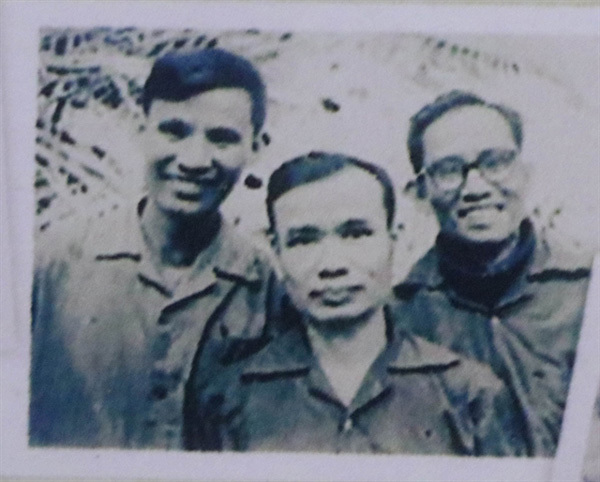 |
| Dang Minh Phuong (left) when he worked as a reporter for Cờ giải phóng (Liberation Flag) newspaper during the Resistance War against America. — Photo courtesy of Dang Minh Phuong |
Phuong joined Vietnam’s revolutionary press in 1950 as a reporter for the south-central region’s Cứu Quốc (Save the Nation) newspaper. He later worked for Nhân Dân (The People) newspaper in Hanoi in 1955 after moving to the north the same year.
In 1966, as the war against America entered an intense phase, he was dispatched to work for Cờ giải phóng (Liberation Flag) newspaper inside the Zone V battlefields which covered a vast region from central Quang Tri to Gia Lai Province which was one of the fiercest battlefronts at that time.
Spending more than 10 years embedding himself with soldiers, enduring bombings and raids as a daily occurrence, Phuong said it was luck, sometimes a miracle, that helped him survive.
It was late 1967 when Phuong’s team, comprised of reporters from different press units, received orders to move their base from Tra My in Quang Nam Province to an area near Da Nang to prepare for reporting on the General Offensive and Uprising of Tet Mau Than 1968 (widely known as the Tet Offensive).
“Our group of six/seven reporters went to a village in the mountainous area of Quang Nam Province which supported liberation forces. We took a rest at a house in the village,” he recalled.
“We, three or four reporters were hanging hammocks here and there to lie down. My two hammock poles were very close to each other, so the hammock sagged down and it was hard to lie on but I was used to it.
“When I was just about to sleep, around 10pm, an artillery shell shot from Nong Son military station dropped right in the yard of the house.
“My hammock had two ends torn apart due to the pieces from the artillery shell. If at that time I had laid down straight like this then it would have injured both my head and legs. I was very, very lucky.”
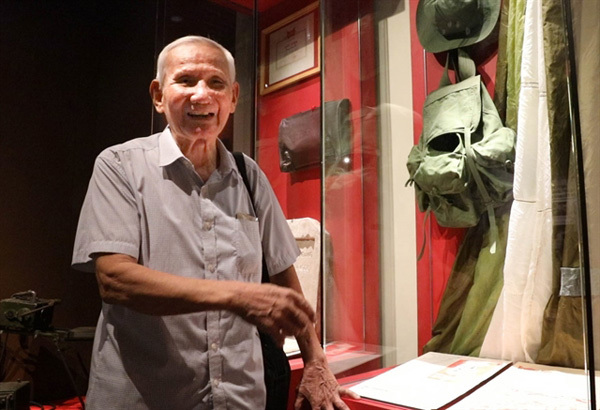 |
| Phuong visits his 'lucky' hammock now being displayed at the Vietnam Press Museum. — VNS Photo Paul Kennedy |
Since surviving that near-death experience, Phuong regards that small piece of cloth as his good luck charm.
He stitched the torn-apart pieces together and kept the hammock through every journey of his life.
He added: “In 1973, I was provided with a new hammock but I didn’t want to leave the old one.
“So I gave the new one to two female colleagues and continued to use the old one until 1975 when the war ended and had kept it by my side for many years.”
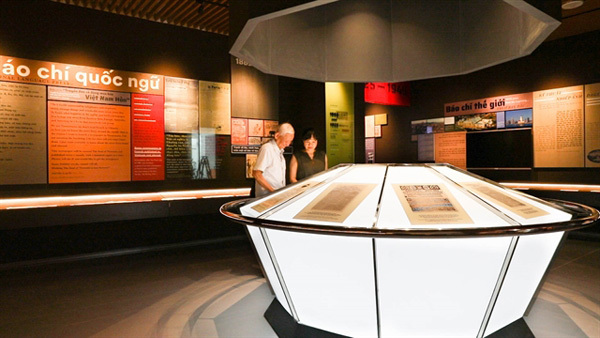 |
| Vietnam Press Museum, opened on Friday, honours the contributions of generations of Vietnamese journalists. — VNS Photo Paul Kennedy |
Now, 45 years after the war, his beloved memento has become part of history. It is being displayed in the newly-opened Vietnam Press Museum to highlight the sacrifice and bravery of generations of Vietnamese journalists, something Phuong has never imagined of before.
“I never thought my story would have been recorded in a museum or written in an article,” Phuong said in a recent visit to the museum.
“But unexpectedly, our country was unified and then there is a press museum.”
“Also, there are mementos of other brothers and sisters. They are gathered in such a luxurious place and displayed to the general public.
“This is so good. This is an honour.”
Phuong hopes his story which he feels is insignificant compared to many others’, will help future generations understand more about the war and the work of journalists for the unification and independence of the nation.
He added: “My contribution was nothing compared to that of many other journalists. Many have lost their lives.
“Going to the battlefront was a task everyone in my generation felt responsible for. Of course, we all want to live but even if we die, we will just accept it.
“It was an honour for us, so many voluntarily registered to go many times.
“I didn’t choose to be a journalist. It was a task I was assigned to by the State and the Party. But I am happy that I worked side by side with other brothers and sisters to contribute our little efforts to the nation, the people and the society.” VNS
|
All about Vietnamese journalism The Vietnam Press Museum opened on Friday in Hanoi, honouring the contributions of generations of Vietnamese journalists since the early days of the Vietnamese press until now. On display are more than 700 exhibits and documents, among more than 20,000 in the museum’s collection, depicting life and work of generations of Vietnamese journalists, especially during wartime. Tran Thi Kim Hoa, the museum’s director said: “What is most special about this museum is the mementoes which are associated with generations of journalists, such as manuscripts, autographs, press works, newspapers that were born in different periods and involved blood, sweat and tears of many generations of journalists. “This is also a place to educate the next generations of journalists and people about the courage and indomitable spirit of Vietnamese journalists." The museum opens from 8am to 5pm at E2 Duong Dinh Nghe Road, Cau Giay District. Hoa hopes it is not only a memorial house to journalists but also a place of attraction for the general public and foreign visitors. |
Vu Thu Ha
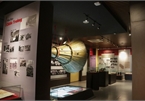
Vietnam Press Museum opened in Hanoi
The Vietnam Press Museum has opened in Hanoi to mark the 95th Vietnamese Press Day (June 21).
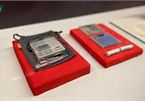
Vietnam Press Museum ready to open
A number of rare items and documents which mark significant events in the history of the Vietnamese revolutionary press are set to be showcased to guests at the first-ever Vietnam Press Museum in Hanoi.
 Journalism can be a very dangerous job, especially for war correspondents who often put their own lives on the line as they report the news.
Journalism can be a very dangerous job, especially for war correspondents who often put their own lives on the line as they report the news.